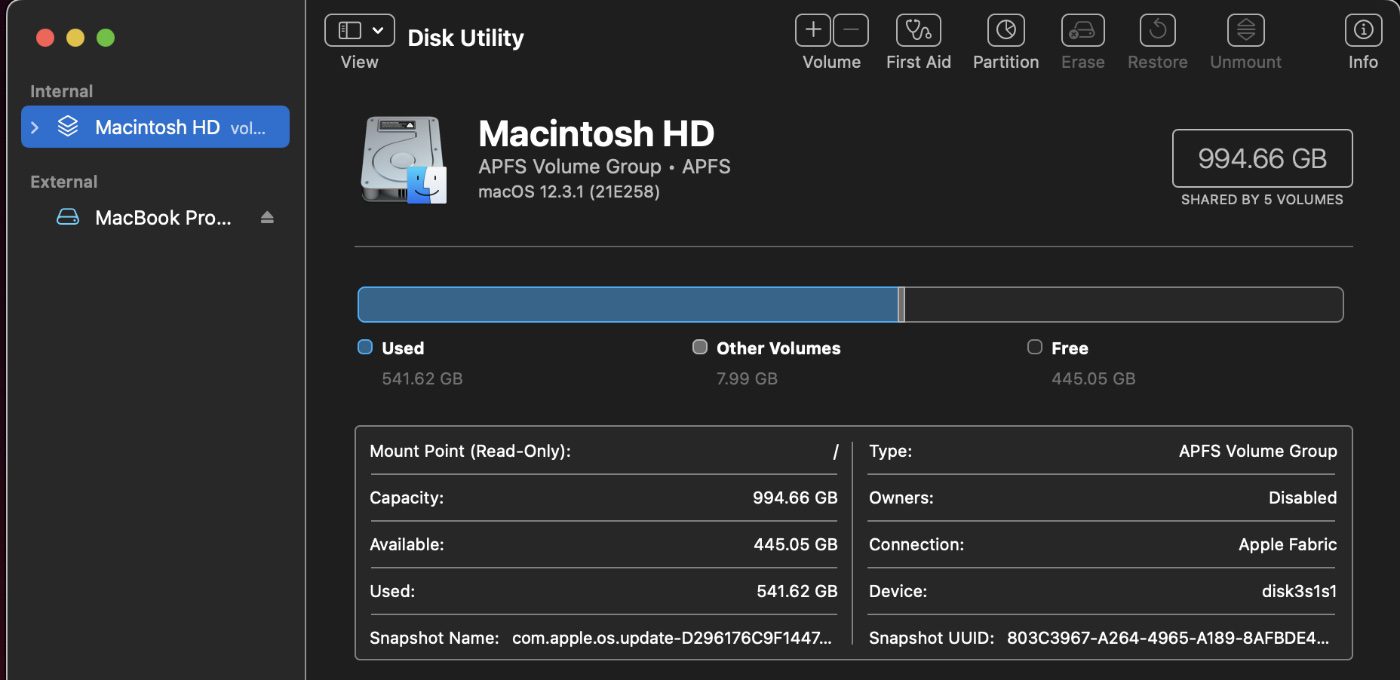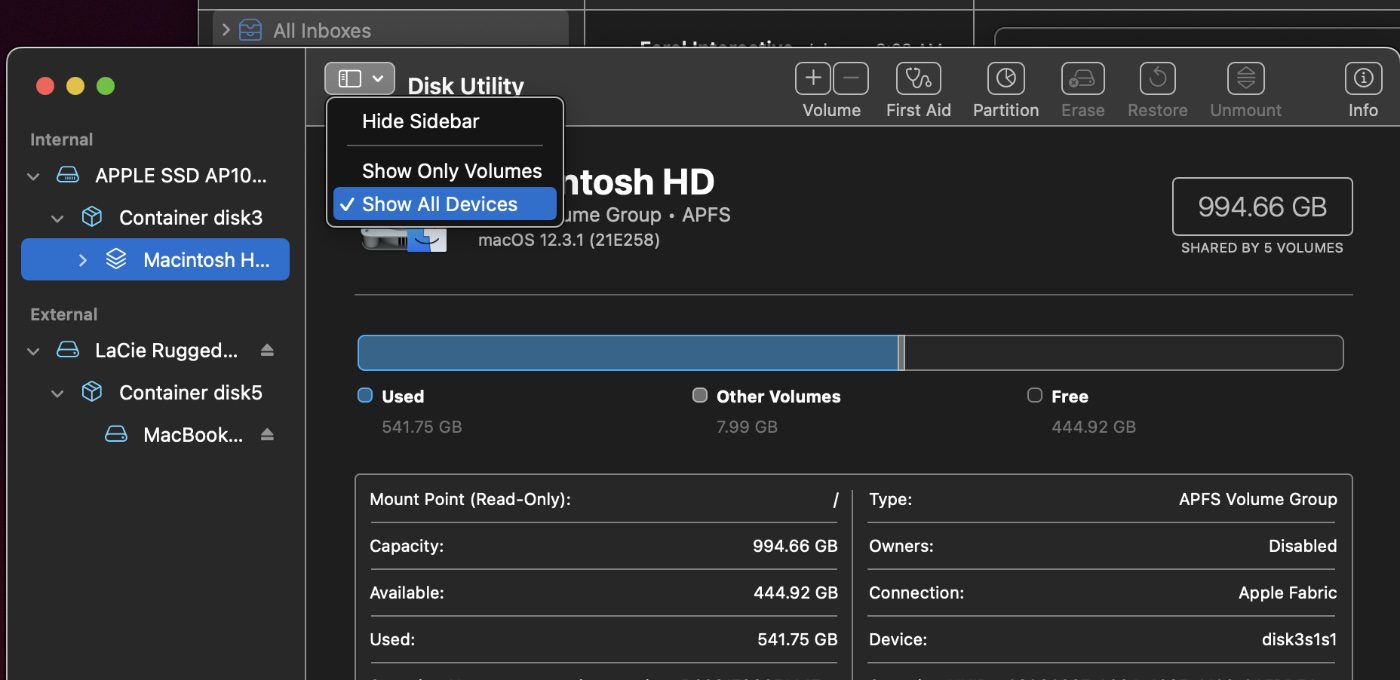You can use the Disk Utility in macOS to repair a variety of problems. Let’s look at how to repair a storage device that you use with your Mac running macOS Monterey.
About Disk Utility
Disk Utility is a tool for performing disk and disk volume-related tasks in macOS. In the classic Mac OS (pre-Mac OS X), similar functionality to the verification features of Disk Utility could be found in the Disk First Aid application.
Disk Utility can fix certain disk problems such as (as Apple notes) multiple apps quitting unexpectedly, a corrupted file, a wonky external device, or the refusal of your Mac to power up. Of course, it can’t fix ALL problems, but it’s certainly a tool when you’re having issues.
By the way, you may want to print this tutorial so you can refer to it later. You don’t have access to it when you’re diagnosing problems on your Mac’s main drive.
Run First Aid
To check and repair a disk, first run First Aid on each volume and container on the storage device in turn, then run it on the storage device itself.
° Open Disk Utility (Finder > Applications > Utilities).

° Choose View > Show All Devices

° In the sidebar, select the disk you’re having problems with.
° Click on First Aid at the top, and select Run.
If you’re checking your startup disk or startup volume, restart your computer in macOS Recovery, select Disk Utility in the macOS Recovery window, then click Continue. If you check your startup volume (Macintosh HD), make sure you also check your data volume (Macintosh HD – Data).

° Once complete, you’ll see a drop-down showing the status; click this to explore. Disk Utility will try to repair what it can and warn you about errors it found that it can’t fix.
If Disk Utility reports that the disk appears to be OK or has been repaired, you’re done. You can click Show Details to see more information about the repairs. Otherwise, go to the “how to repair a storage device” section below.
If Disk Utility tells you the disk is about to fail, you’ll need back up your data and replace the disk, Sadly, you won’t be able to repair it.
How to repair a storage device
If Disk Utility has reported “overlapped extent allocation” errors, two or more files occupy the same space on your disk; at least one of them is likely to be corrupted. You need to check each file in the list of affected files. Most of the files in the list have aliases in a DamagedFiles folder at the top level of your disk.
If you can replace a file or re-create it, delete it. If it contains information you need, open it and examine its data to make sure it hasn’t been corrupted.
If Disk Utility can’t repair your disk, or you’re told that the First Aid process failed, try to repair the disk or partition again. If that doesn’t work, back up as much of your data as possible, reformat the disk, reinstall macOS, then restore your backed-up data.
If your Mac has a Fusion Drive and you see a flashing question mark or alert, see the troubleshooting section of the Apple Support article About Fusion Drive, a storage option for some Mac computers.










Dennis-
Great article. What about ThunderBay RAIDS?
Best as always,
Loren S. Miller
NeoTron Cinema Group